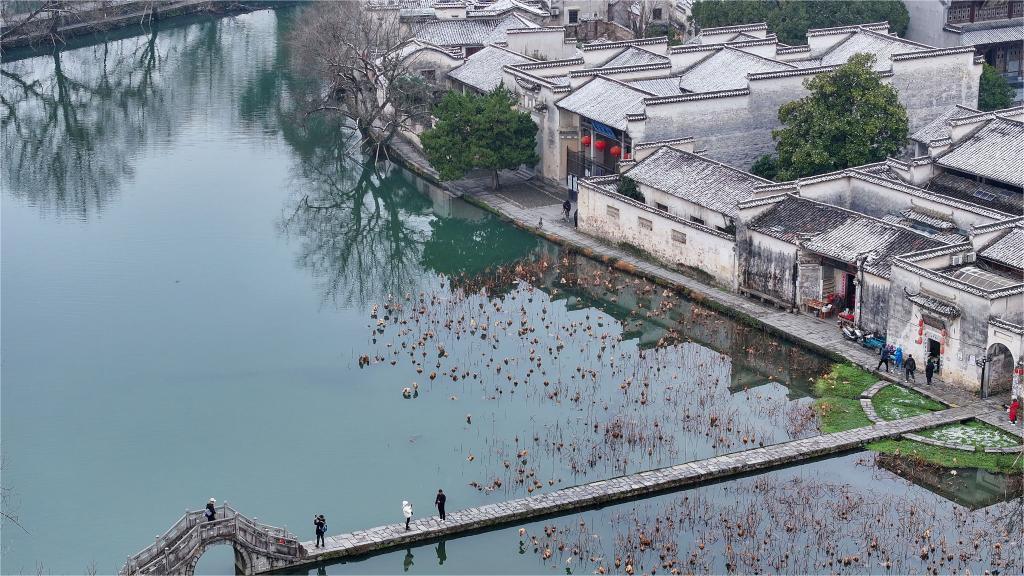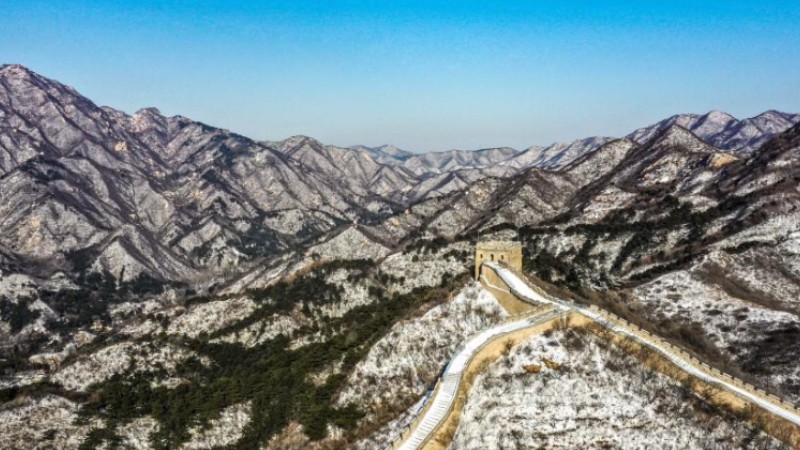Pinglu Canal under construction in S China

This aerial photo taken on Dec. 23, 2023 shows the construction site of a junction of the Pinglu Canal in south China's Guangxi Zhuang Autonomous Region. The Pinglu Canal is a flagship project on the New International Land-Sea Trade Corridor. It stretches from the Xijin reservoir in the city of Hengzhou to Qinzhou port in the south of Guangxi, where ships can reach the Beibu Gulf via the Qinjiang River, opening a shorter route to the sea for Guangxi and other regions in southwest China. (Xinhua/Zhang Ailin)

This aerial photo taken on Dec. 24, 2023 shows a watercourse of the Pinglu Canal running through the city in Qinzhou, south China's Guangxi Zhuang Autonomous Region. The Pinglu Canal is a flagship project on the New International Land-Sea Trade Corridor. It stretches from the Xijin reservoir in the city of Hengzhou to Qinzhou port in the south of Guangxi, where ships can reach the Beibu Gulf via the Qinjiang River, opening a shorter route to the sea for Guangxi and other regions in southwest China. (Xinhua/Zhang Ailin)
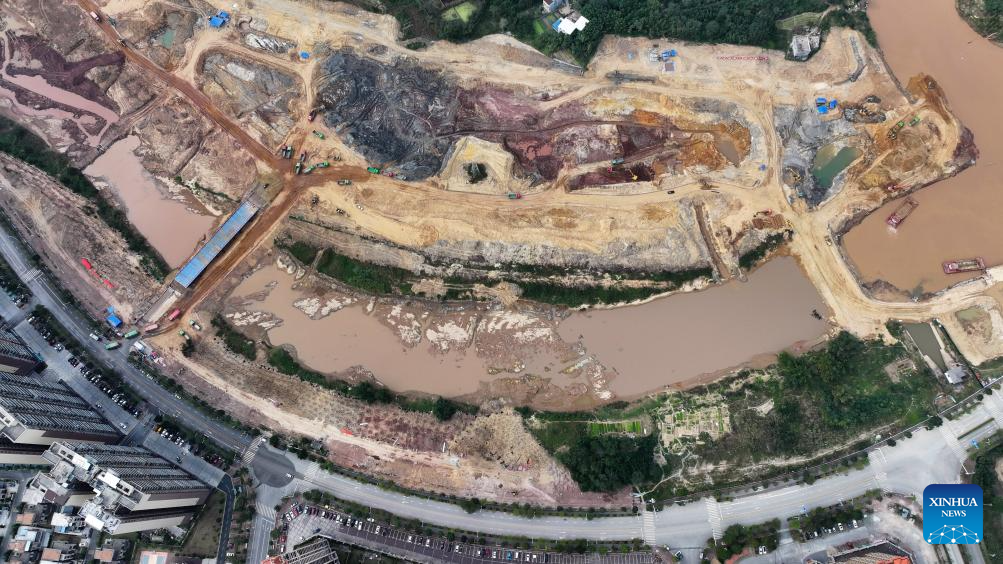
This aerial photo taken on Dec. 24, 2023 shows the construction site of a watercourse that runs through the city in Qinzhou, south China's Guangxi Zhuang Autonomous Region. The Pinglu Canal is a flagship project on the New International Land-Sea Trade Corridor. It stretches from the Xijin reservoir in the city of Hengzhou to Qinzhou port in the south of Guangxi, where ships can reach the Beibu Gulf via the Qinjiang River, opening a shorter route to the sea for Guangxi and other regions in southwest China. (Xinhua/Zhang Ailin)
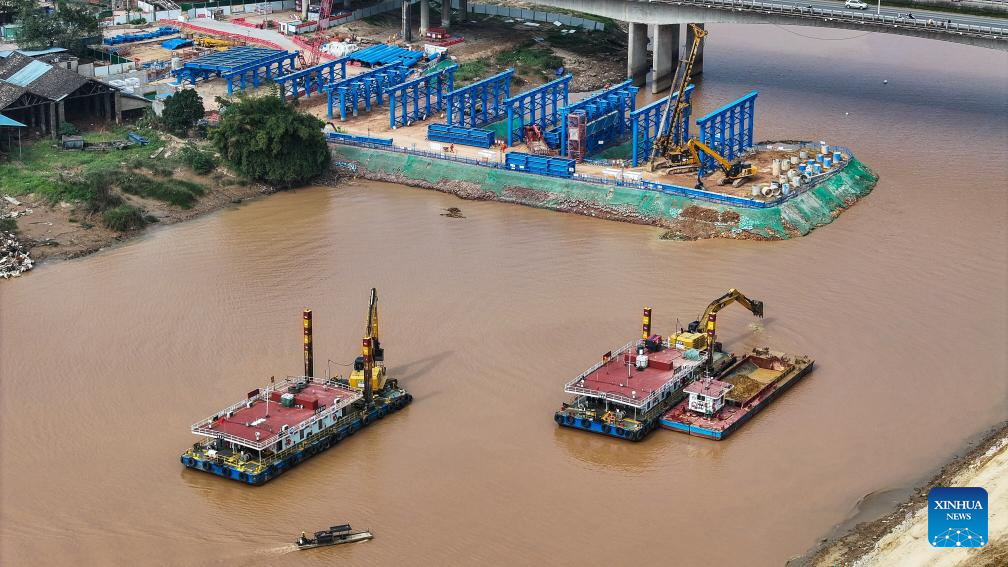
This aerial photo taken on Dec. 24, 2023 shows the construction site of a temporary bridge at a watercourse in Qinzhou, south China's Guangxi Zhuang Autonomous Region. The Pinglu Canal is a flagship project on the New International Land-Sea Trade Corridor. It stretches from the Xijin reservoir in the city of Hengzhou to Qinzhou port in the south of Guangxi, where ships can reach the Beibu Gulf via the Qinjiang River, opening a shorter route to the sea for Guangxi and other regions in southwest China. (Xinhua/Zhang Ailin)
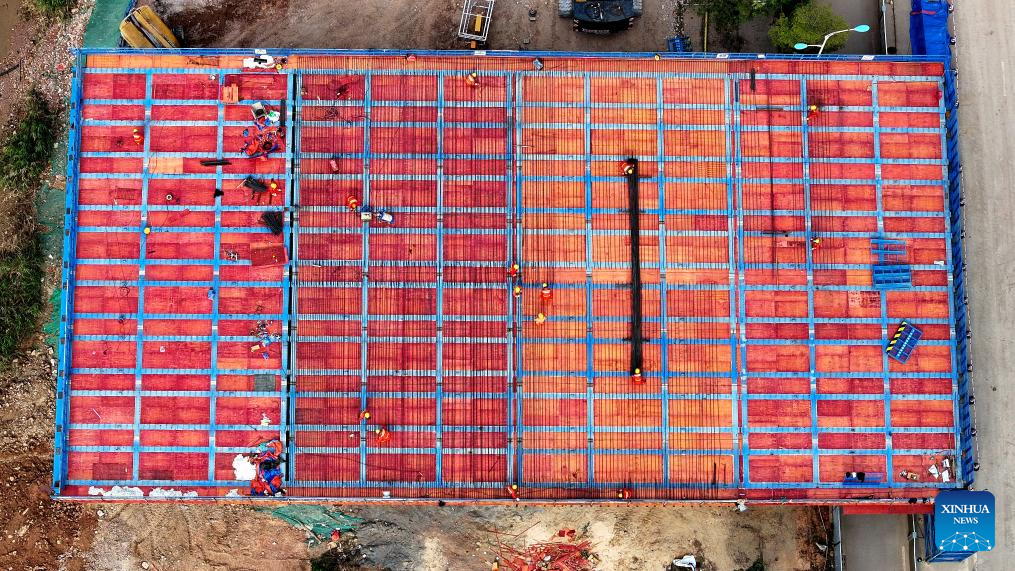
This aerial photo taken on Dec. 24, 2023 shows a construction team building a temporary bridge in Qinzhou, south China's Guangxi Zhuang Autonomous Region. The Pinglu Canal is a flagship project on the New International Land-Sea Trade Corridor. It stretches from the Xijin reservoir in the city of Hengzhou to Qinzhou port in the south of Guangxi, where ships can reach the Beibu Gulf via the Qinjiang River, opening a shorter route to the sea for Guangxi and other regions in southwest China. (Xinhua/Zhang Ailin)
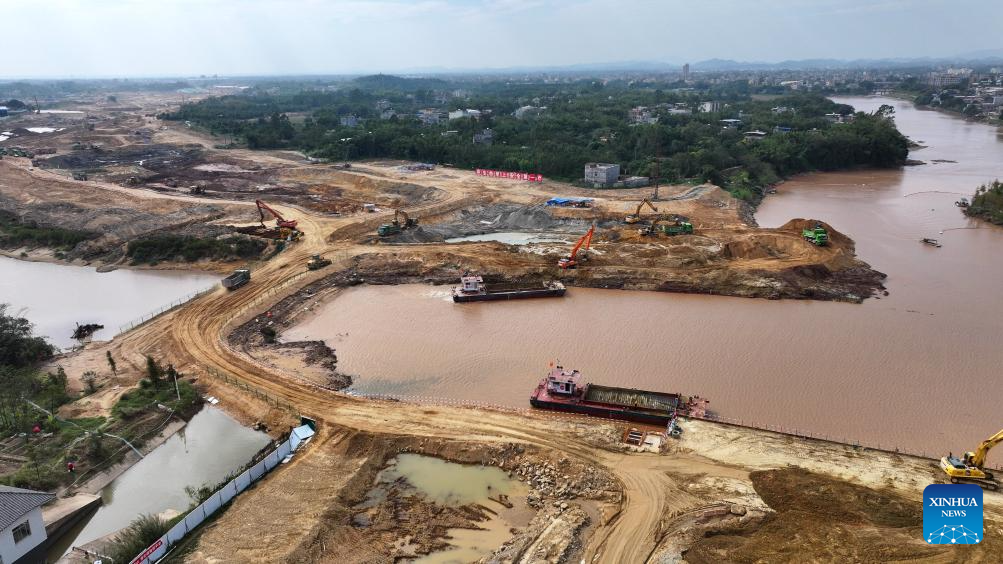
This aerial photo taken on Dec. 24, 2023 shows the construction site of a watercourse that runs through the city in Qinzhou, south China's Guangxi Zhuang Autonomous Region. The Pinglu Canal is a flagship project on the New International Land-Sea Trade Corridor. It stretches from the Xijin reservoir in the city of Hengzhou to Qinzhou port in the south of Guangxi, where ships can reach the Beibu Gulf via the Qinjiang River, opening a shorter route to the sea for Guangxi and other regions in southwest China. (Xinhua/Zhang Ailin)

This aerial photo taken on Dec. 24, 2023 shows the construction site of a bridge at a junction of the Pinglu Canal in south China's Guangxi Zhuang Autonomous Region. The Pinglu Canal is a flagship project on the New International Land-Sea Trade Corridor. It stretches from the Xijin reservoir in the city of Hengzhou to Qinzhou port in the south of Guangxi, where ships can reach the Beibu Gulf via the Qinjiang River, opening a shorter route to the sea for Guangxi and other regions in southwest China. (Xinhua/Zhang Ailin)
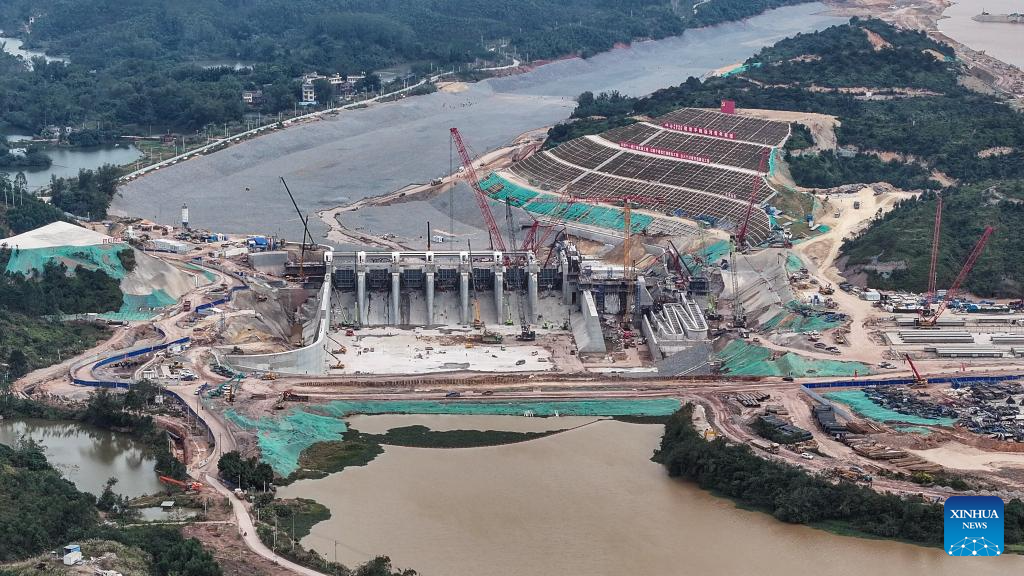
This aerial photo taken on Dec. 24, 2023 shows the construction site of a sluice at a junction of the Pinglu Canal in south China's Guangxi Zhuang Autonomous Region. The Pinglu Canal is a flagship project on the New International Land-Sea Trade Corridor. It stretches from the Xijin reservoir in the city of Hengzhou to Qinzhou port in the south of Guangxi, where ships can reach the Beibu Gulf via the Qinjiang River, opening a shorter route to the sea for Guangxi and other regions in southwest China. (Xinhua/Zhang Ailin)
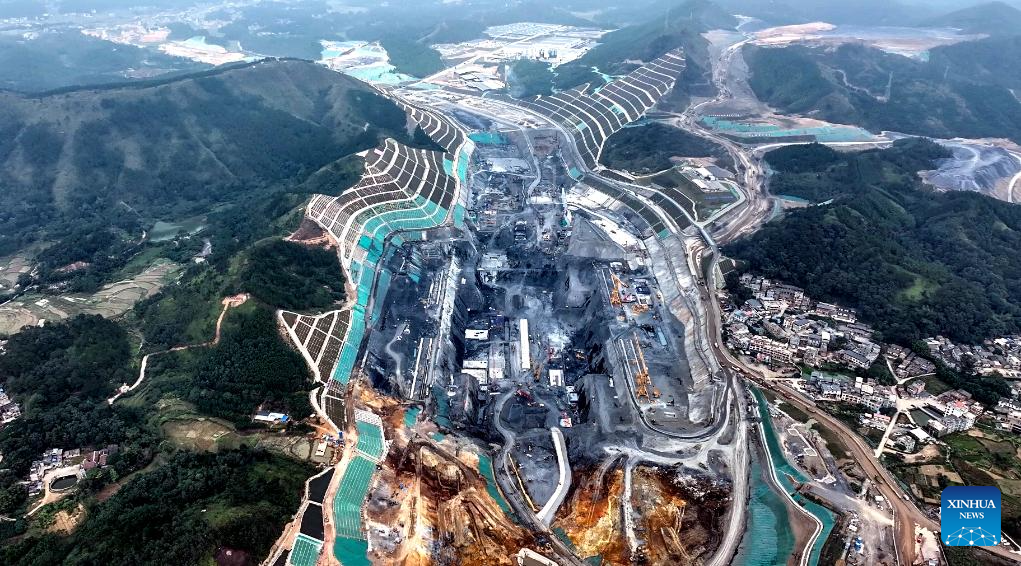
This aerial photo taken on Dec. 23, 2023 shows the construction site of a junction of the Pinglu Canal in south China's Guangxi Zhuang Autonomous Region. The Pinglu Canal is a flagship project on the New International Land-Sea Trade Corridor. It stretches from the Xijin reservoir in the city of Hengzhou to Qinzhou port in the south of Guangxi, where ships can reach the Beibu Gulf via the Qinjiang River, opening a shorter route to the sea for Guangxi and other regions in southwest China. (Xinhua/Zhang Ailin)
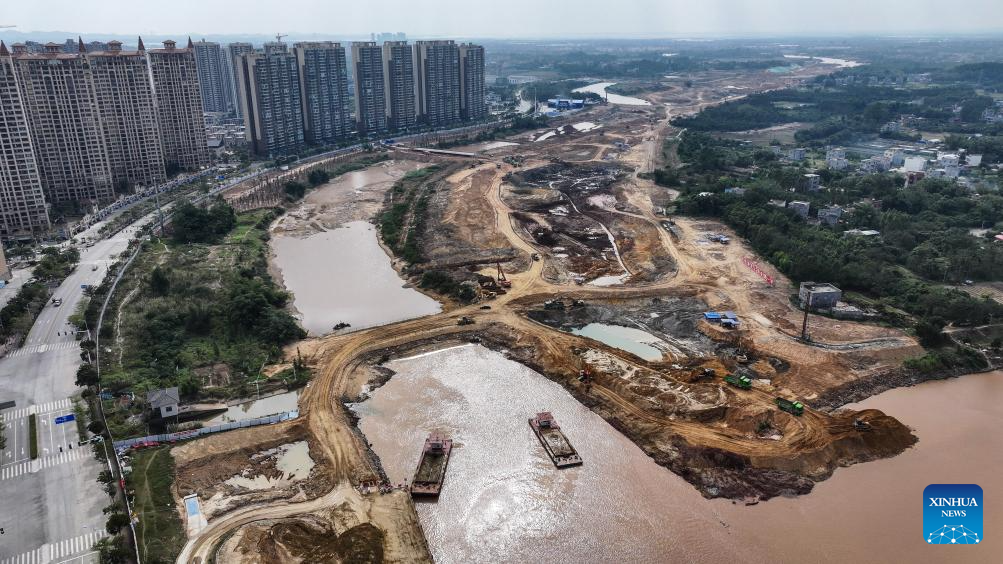
This aerial photo taken on Dec. 24, 2023 shows the construction site of a watercourse that runs through the city in Qinzhou, south China's Guangxi Zhuang Autonomous Region. The Pinglu Canal is a flagship project on the New International Land-Sea Trade Corridor. It stretches from the Xijin reservoir in the city of Hengzhou to Qinzhou port in the south of Guangxi, where ships can reach the Beibu Gulf via the Qinjiang River, opening a shorter route to the sea for Guangxi and other regions in southwest China. (Xinhua/Zhang Ailin)

This aerial photo taken on Dec. 23, 2023 shows the construction site of a junction of the Pinglu Canal in south China's Guangxi Zhuang Autonomous Region. The Pinglu Canal is a flagship project on the New International Land-Sea Trade Corridor. It stretches from the Xijin reservoir in the city of Hengzhou to Qinzhou port in the south of Guangxi, where ships can reach the Beibu Gulf via the Qinjiang River, opening a shorter route to the sea for Guangxi and other regions in southwest China. (Xinhua/Zhang Ailin)
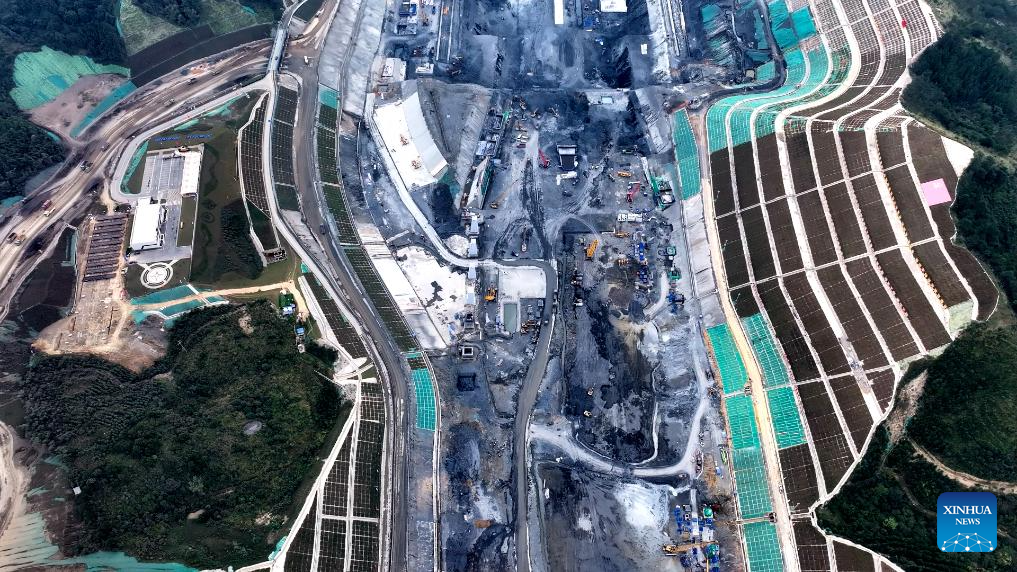
This aerial photo taken on Dec. 23, 2023 shows the construction site of a junction of the Pinglu Canal in south China's Guangxi Zhuang Autonomous Region. The Pinglu Canal is a flagship project on the New International Land-Sea Trade Corridor. It stretches from the Xijin reservoir in the city of Hengzhou to Qinzhou port in the south of Guangxi, where ships can reach the Beibu Gulf via the Qinjiang River, opening a shorter route to the sea for Guangxi and other regions in southwest China. (Xinhua/Zhang Ailin)
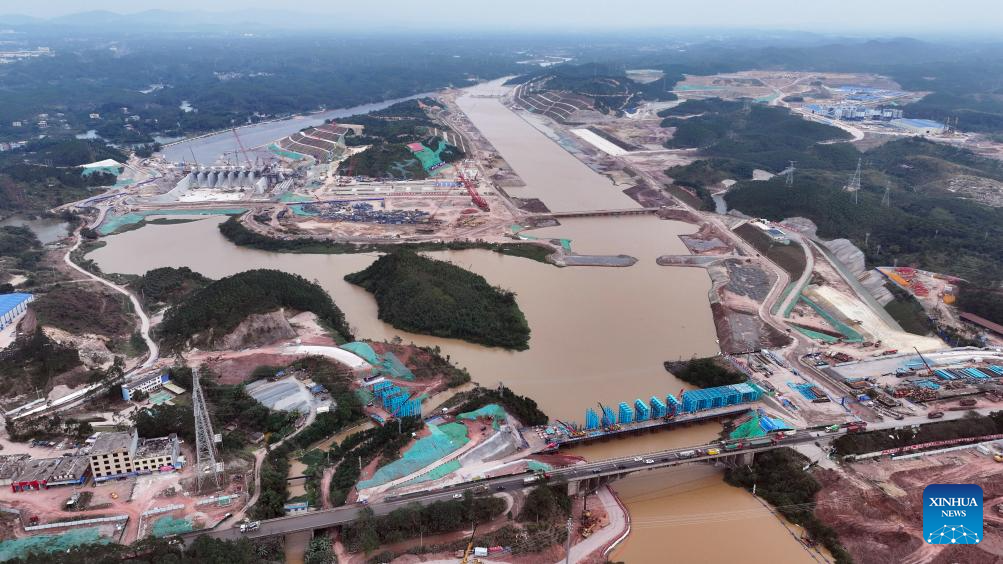
This aerial photo taken on Dec. 24, 2023 shows the construction site of a junction of the Pinglu Canal in south China's Guangxi Zhuang Autonomous Region. The Pinglu Canal is a flagship project on the New International Land-Sea Trade Corridor. It stretches from the Xijin reservoir in the city of Hengzhou to Qinzhou port in the south of Guangxi, where ships can reach the Beibu Gulf via the Qinjiang River, opening a shorter route to the sea for Guangxi and other regions in southwest China. (Xinhua/Zhang Ailin)

This aerial photo taken on Dec. 24, 2023 shows a construction team broadening the watercourse in Qinzhou, south China's Guangxi Zhuang Autonomous Region. The Pinglu Canal is a flagship project on the New International Land-Sea Trade Corridor. It stretches from the Xijin reservoir in the city of Hengzhou to Qinzhou port in the south of Guangxi, where ships can reach the Beibu Gulf via the Qinjiang River, opening a shorter route to the sea for Guangxi and other regions in southwest China. (Xinhua/Zhang Ailin)
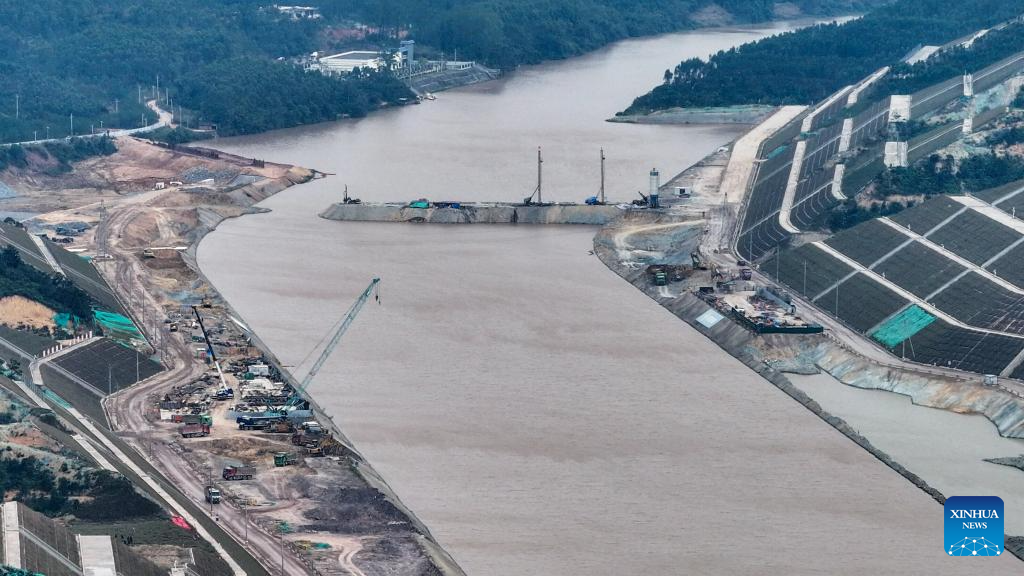
This aerial photo taken on Dec. 24, 2023 shows the construction site of a dam at a junction of the Pinglu Canal in south China's Guangxi Zhuang Autonomous Region. The Pinglu Canal is a flagship project on the New International Land-Sea Trade Corridor. It stretches from the Xijin reservoir in the city of Hengzhou to Qinzhou port in the south of Guangxi, where ships can reach the Beibu Gulf via the Qinjiang River, opening a shorter route to the sea for Guangxi and other regions in southwest China. (Xinhua/Zhang Ailin)
Photos
Related Stories
Copyright © 2023 People's Daily Online. All Rights Reserved.







